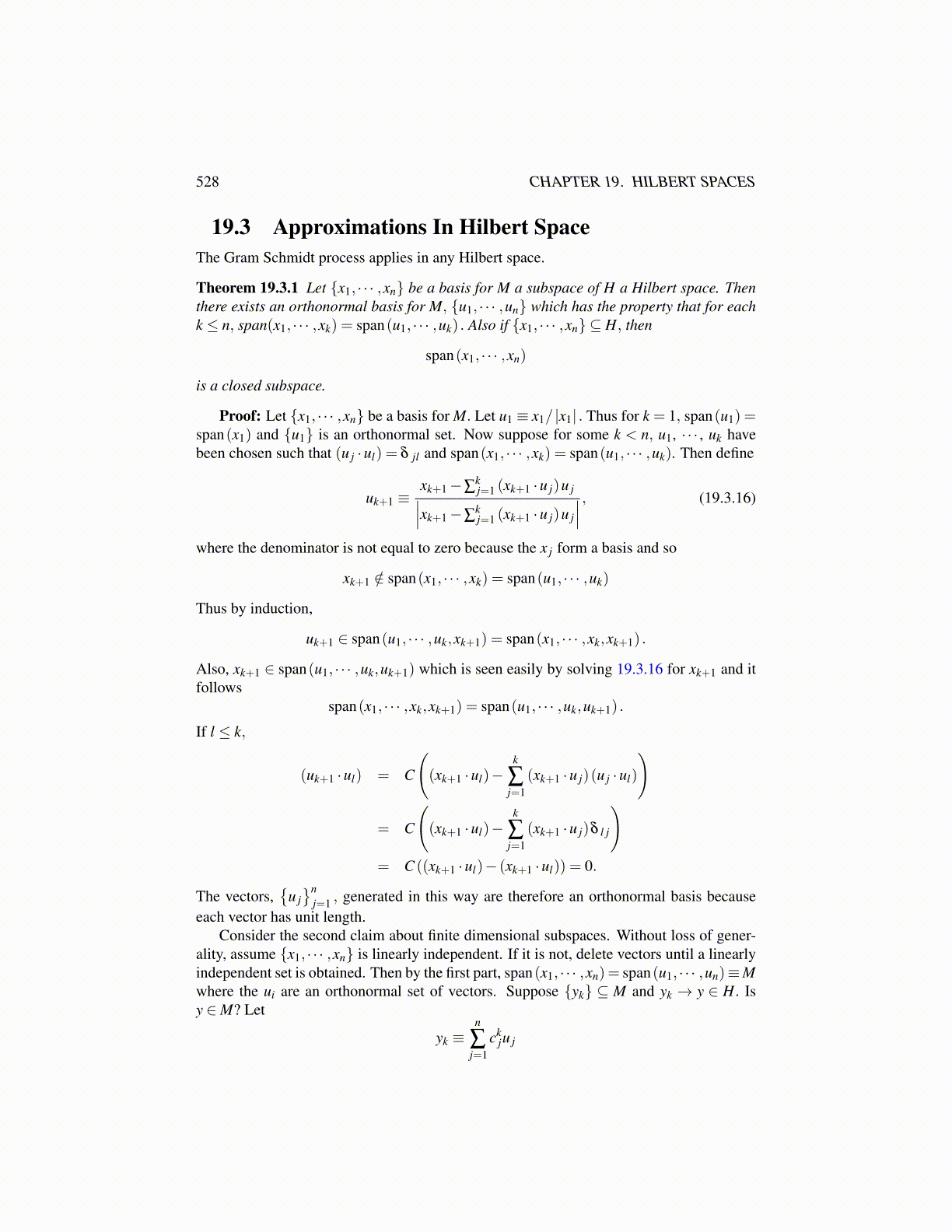
528 CHAPTER 19. HILBERT SPACES
19.3 Approximations In Hilbert SpaceThe Gram Schmidt process applies in any Hilbert space.
Theorem 19.3.1 Let {x1, · · · ,xn} be a basis for M a subspace of H a Hilbert space. Thenthere exists an orthonormal basis for M, {u1, · · · ,un} which has the property that for eachk ≤ n, span(x1, · · · ,xk) = span(u1, · · · ,uk) . Also if {x1, · · · ,xn} ⊆ H, then
span(x1, · · · ,xn)
is a closed subspace.
Proof: Let {x1, · · · ,xn} be a basis for M. Let u1 ≡ x1/ |x1| . Thus for k = 1, span(u1) =span(x1) and {u1} is an orthonormal set. Now suppose for some k < n, u1, · · · , uk havebeen chosen such that (u j ·ul) = δ jl and span(x1, · · · ,xk) = span(u1, · · · ,uk). Then define
uk+1 ≡xk+1−∑
kj=1 (xk+1 ·u j)u j∣∣∣xk+1−∑kj=1 (xk+1 ·u j)u j
∣∣∣ , (19.3.16)
where the denominator is not equal to zero because the x j form a basis and so
xk+1 /∈ span(x1, · · · ,xk) = span(u1, · · · ,uk)
Thus by induction,
uk+1 ∈ span(u1, · · · ,uk,xk+1) = span(x1, · · · ,xk,xk+1) .
Also, xk+1 ∈ span(u1, · · · ,uk,uk+1) which is seen easily by solving 19.3.16 for xk+1 and itfollows
span(x1, · · · ,xk,xk+1) = span(u1, · · · ,uk,uk+1) .
If l ≤ k,
(uk+1 ·ul) = C
((xk+1 ·ul)−
k
∑j=1
(xk+1 ·u j)(u j ·ul)
)
= C
((xk+1 ·ul)−
k
∑j=1
(xk+1 ·u j)δ l j
)= C ((xk+1 ·ul)− (xk+1 ·ul)) = 0.
The vectors,{
u j}n
j=1 , generated in this way are therefore an orthonormal basis becauseeach vector has unit length.
Consider the second claim about finite dimensional subspaces. Without loss of gener-ality, assume {x1, · · · ,xn} is linearly independent. If it is not, delete vectors until a linearlyindependent set is obtained. Then by the first part, span(x1, · · · ,xn)= span(u1, · · · ,un)≡Mwhere the ui are an orthonormal set of vectors. Suppose {yk} ⊆ M and yk → y ∈ H. Isy ∈M? Let
yk ≡n
∑j=1
ckju j